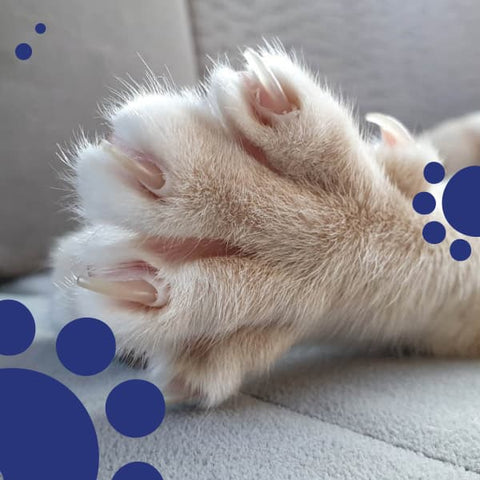As a new cat owner, one of the many concerns is whether should I clip my cat's claws or not. While some people believe it's necessary for the health and safety of their cat and their household, others argue that it's unnecessary and even harmful. In this article, I'll provide you a comprehensive guide to the pros and cons of clipping your cat's claws, as well as alternatives and tips for safe and effective claw trimming.
Should I Clip My Cat's Claws?
The decision to clip your cat's claws ultimately depends on your specific situation. Some owners find that their cat's claws cause damage to furniture or other household items, while others worry about the risk of scratches and injuries to themselves or their children. However, it's important to note that cats use their claws for a variety of essential activities, such as climbing, scratching, and self-defense. Clipping a cat's claws can therefore have both positive and negative consequences. Why is clipping the cat’s claws a big concern for cat owners?
Here’re the pros and cons you did not know before.
Pros of Clipping Your Cat's Claws

These pros are the answers to should I clip my cat’s claws:
- Reduced damage: Clipping your cat's claws can prevent them from causing damage to furniture, carpets, and other household items.
- Safety: Clipped claws are less sharp and less likely to cause scratches or injuries to humans or other pets.
- Health benefits: Regular claw trimming can prevent ingrown claws, which can be painful and lead to infection.
- Easier grooming: Clipped claws make it easier to groom your cat, as they're less likely to snag on brushes or combs.
Cons of Clipping Your Cat's Claws
In the worst scenarios there’re cons of clipping the cat’s claws:
- Reduced mobility: Clipped claws can make it more difficult for cats to climb, scratch, and defend themselves.
- Stress and discomfort: Clipping your cat's claws can be stressful and uncomfortable for them, especially if done incorrectly.
- Injury risk: If you clip your cat's claws too short or cut into the quickly, it can cause pain, bleeding, and infection.
- Natural behavior: Claws are an essential part of a cat's anatomy and natural behavior, and some believe it's cruel to remove them.
The important question is not whether should I clip my cat’s claws but how to clip it safely.
How to Clip Your Cat's Claws Safely?
If you do decide to clip your cat's claws, it's essential that you do so safely and effectively. Here are some steps to follow:
- Choose the right time: It's best to clip your cat's claws when they're relaxed and calm, such as after a meal or a play session.
- Get the right tools: Use a pair of sharp, high-quality , and have some styptic powder on hand in case of bleeding.
- Hold your cat securely: Gently hold your cat in your lap or on a table, and use one hand to hold its paw and the other to clip its claw.
- Clip the tip of the claw: Make sure to only clip the very tip of the claw, avoiding the pinkish area known as the quick.
- Reward your cat: Praise and reward your cat with treats or affection after each claw is clipped, to create a positive association.
Alternatives to Clipping Your Cat's Claws:
If you're not comfortable with clipping your cat's claws, or if your cat is resistant to it, there are alternatives you can try:
- Scratching posts: Provide your cat with plenty of scratching posts and pads, so they can satisfy their scratching instincts without damaging furniture.
- Soft paws: Soft paws are small plastic caps that can be glued onto your cat's claws, providing a safe and humane alternative to clipping.
- Regular nail filing: Use a nail file or emery board to file down your cat's claws, rather than clipping them.
- Professional grooming: If you're unsure about how to clip your cat's claws, or if your cat is particularly resistant, consider taking them to a professional groomer or veterinarian.
Cats are sensitive pets and always seem small which makes you afraid to hurt them.
So you need to understand your pet’s behavior, its signs, and the common mistakes to avoid before you search for Should I clip my cat’s claws.
Understanding Your Cat's Behavior:
To make the right decision about whether or not to clip your cat's claws, it's important to understand their behavior and needs. Cats use their claws for a variety of reasons, such as marking their territory, stretching and exercising, and self-defense. They also have a natural instinct to scratch, which helps them shed the outer layer of their claws and maintain their sharpness.
Signs Your Cat's Claws Need Trimming
If you're unsure whether or not your cat's claws need trimming, here are some signs to look out for:
- Damage to furniture or other household items.
- Scratches or injuries to humans or other pets.
- Inability to retract claws fully.
- Ingrown claws or overgrown quicks.
read more about How to make litter box non stick
Common Mistakes to Avoid When Clipping Your Cat's Claws
When clipping your cat's claws, it's important to avoid these common mistakes:
- Clipping too short: Cutting into the quick can cause pain, bleeding, and infection.
- Using dull or inappropriate clippers: Use sharp, high-quality clippers designed specifically for cat claws.
- Clipping too frequently: Claws should only be clipped every 2-4 weeks, to avoid over-clipping and stress.
- Forgetting to reward your cat: Positive reinforcement is key to making claw clipping a positive experience for your cat.
And now..
When to Seek Professional Help?
If you're unsure about how to clip your cat's claws, or if your cat is particularly resistant or anxious, it's best to seek professional help. A veterinarian or professional groomer can provide guidance and support, and ensure that your cat's claws are trimmed safely and effectively.
Making the Right Decision for Your Cat!
In conclusion, the decision to clip your cat's claws should be based on your specific situation and should take into account your cat's behavior, needs, and preferences. While there are pros and cons to both clipping and not clipping, there are also alternatives and tips for safe and effective claw trimming. By understanding your cat's behavior and needs, and by following the guidelines outlined in this article, you can make the right decision for your cat and ensure its health and happiness.
If you're still unsure about whether or not to clip your cat's claws, or if you need more guidance on how to do so safely and effectively, consider consulting with a veterinarian or professional groomer. They can provide personalized advice and support, and ensure that your cat's claws are trimmed in a way that's safe and humane.

